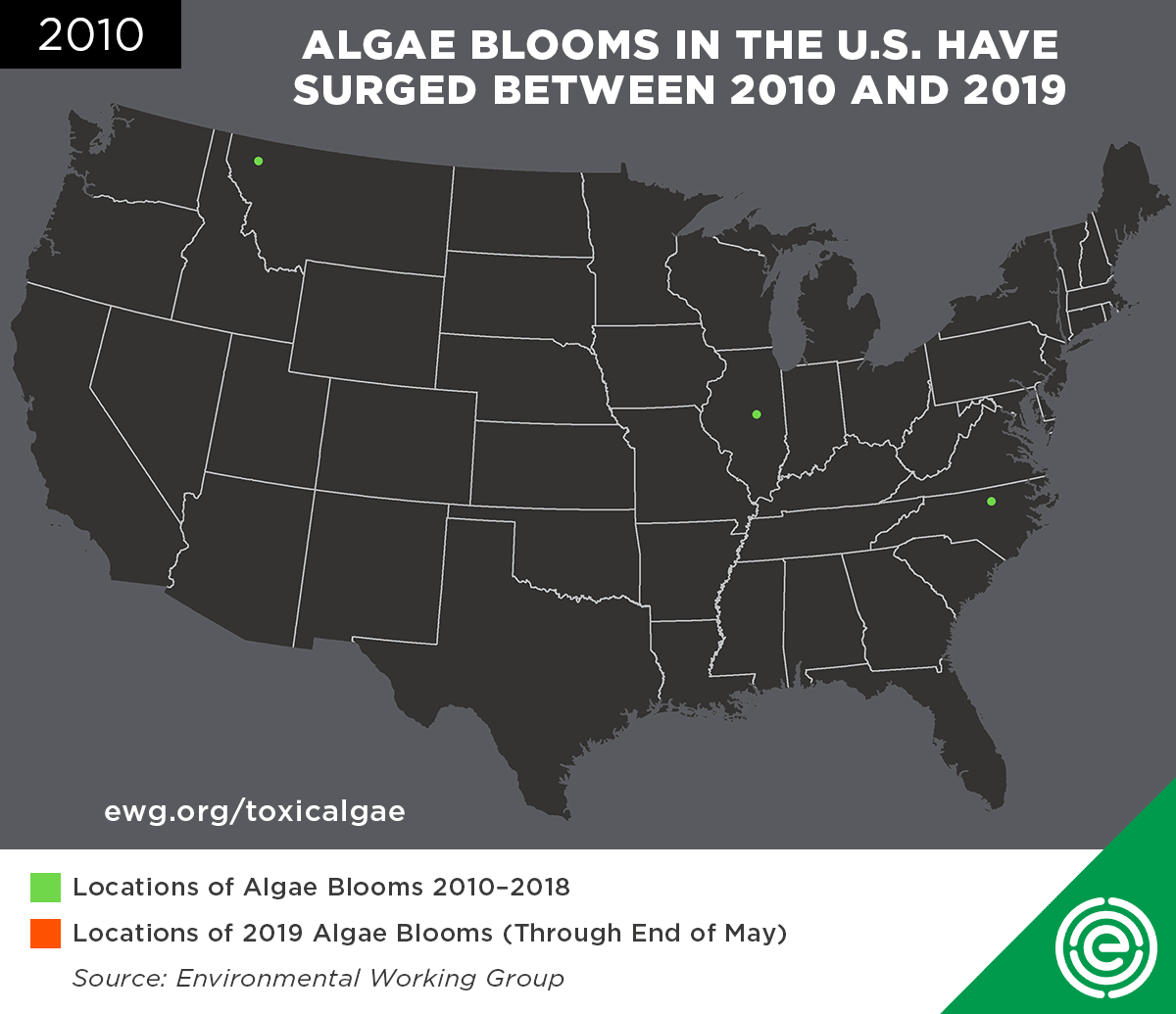MINNEAPOLIS – With peak toxic algae bloom season underway, the Environmental Working Group is releasing an updated map of all algae outbreaks reported in the U.S. since 2010. In coming months, the map will be updated weekly, providing comprehensive tracking of this growing nationwide hazard.
Algae blooms are an epidemic, polluting lakes and other waterways, including many used as sources for drinking water, as a 2018 EWG report revealed. They tend to thrive when water is warmer, usually from May through October, but can occur anytime, and EWG’s investigations reveal that out-of-season blooms are becoming more common.
“No federal agency publicly tracks algae blooms, so we are trying to fill the gap,” said Anne Weir Schechinger, EWG senior economic analyst. “It’s imperative that the public understand the threat and what they can do about it.”
Algae outbreaks occur when bacteria-laden fertilizer and manure from farms run off into waterways, triggering the growth of a thick, blue-green goop on the water’s surface – not technically algae but microscopic single-celled organisms called cyanobacteria. Not all blooms are toxic, but those that are produce cyanotoxins like microcystins and other poisons.
EWG’s analysis found that, between 2010 and May 2019, 550 algae blooms were reported in waterways in 47 states. Last year, the 256 outbreaks in 39 states were more than twice the number reported in 2017, and a staggering increase from 2010, with three outbreaks reported in three states.

“Algae blooms are spreading at an alarming rate, and we expect 2019 to be no exception to this trend,” Schechinger said. “It’s likely that outbreaks will occur across the U.S. – some with significant negative repercussions for local economies, recreation and even tap water.”
Toxic algae blooms can seriously harm human health. Short-term exposure can cause sore throat, nausea, vomiting, diarrhea and liver damage. Long-term exposure can lead to sperm damage, liver failure and even cancer.
No one knows how many Americans are sickened by toxic algae outbreaks each year. But a study by the Centers for Disease Control and Prevention reported that 61 people in Ohio, New York and Washington became ill through exposure to blooms in freshwater lakes in 2009 and 2010. Two-thirds were teenagers and children. But adults are also affected: A Michigan man reported being ill for months after handling fish he caught in Lake Erie during an outbreak.
Toxic algae blooms can also harm animals. In 2015, the East Bay Park District near San Francisco closed five lakes after three dogs died. A dog has already died this spring, in Anderson Lake in Washington. Algae blooms have also caused massive fish die-offs and harmed other marine life.
EWG provides tips about how to avoid being poisoned by a toxic algae bloom and suggestions for policymakers on how to address the problem.
Besides the weekly map update, EWG will share a “Bloom of the Week” on social media. EWG’s work on algae blooms can be accessed here, including satellite photos of algae blooms.
###
The Environmental Working Group is a nonprofit, non-partisan organization that empowers people to live healthier lives in a healthier environment. Through research, advocacy and unique education tools, EWG drives consumer choice and civic action. Visit www.ewg.org for more.



